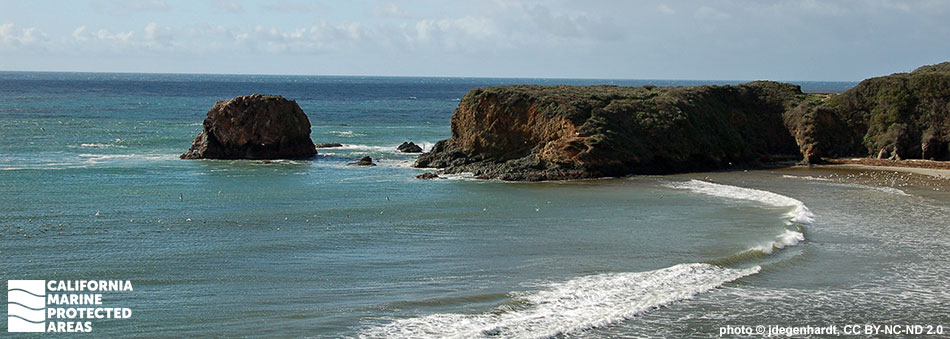
Overview
Point Sur State Marine Reserve (SMR) and Point Sur State Marine Conservation Area (SMCA) are located 25 miles south of Monterey in Big Sur, along California’s Central Coast. The SMR spans more than five miles of shoreline from Point Sur to Cooper Point at the southern end of Andrew Molera State Park. Taken together, the two marine protected areas (MPAs) encompass approximately 20 square miles of sandy seafloor, tidal flats, surfgrass, and rocky pinnacles, as well as the shallowest portions of Sur Canyon, a submarine canyon that reaches depths greater than 600 feet within the SMCA.
The diverse topography creates niches for marine invertebrates like mussels, crabs, anemones, limpets, and sea stars. Caverns, outcroppings, and overhangs created by the complex rocky reef provide habitat for innumerable fish and invertebrates. Rockfish, sculpin, bat rays, cabezon and lingcod thrive in the nearshore kelp forests. Marine mammals like sea otters and harbor seals seek shelter near shore and often go ashore to rest. In deeper waters, salmon and albacore migrate along the coast. The shoreline is accessible near Andrew Molera State Park, and the SMR is also easily viewed from turnouts along Highway 1.
Regulations
Point Sur SMR
It is unlawful to injure, damage, take, or possess any living, geological, or cultural marine resource.
California Code of Regulations Title 14, Section 632(b)(83)(opens in new tab)
Point Sur SMCA
It is unlawful to injure, damage, take, or possess any living, geological, or cultural marine resource, EXCEPT:
Recreational and commercial take of salmon and albacore is allowed.
California Code of Regulations Title 14, Section 632(b)(84)(opens in new tab)
Quick Facts
Point Sur SMR
MPA size: 9.79 square miles
Shoreline span: 5.5 miles
Depth range: 0 to 183 feet
Habitat composition*:
- Rock: 7.89 square miles
- Sand/mud: 6.13 square miles
Point Sur SMCA
MPA size: 10.62 square miles
Depth range: 139 to 624 feet
Habitat composition*:
- Sand/mud: 9.81 square miles
- Rock: 0.81 square miles
*Habitat calculations are based on three-dimensional area and may exceed the total MPA area listed above.